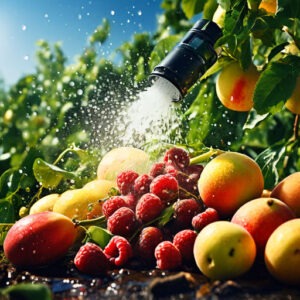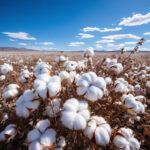A recent report from the Environmental Working Group (EWG) has brought to light the widespread presence of pesticides in commonly consumed fruits and vegetables. This report has raised concerns about potential health risks associated with pesticide exposure, highlighting the importance of understanding pesticide levels in our food.
Prevalence of Pesticides in Fresh Produce:
The 2024 Shopper’s Guide to Pesticides in Produce revealed that approximately 95% of nonorganic strawberries, leafy greens, grapes, peaches, and pears tested by the United States government contained detectable levels of pesticides. This analysis was based on testing data from 47,510 samples of 46 nonorganic fruits and vegetables, primarily conducted by the US Department of Agriculture (USDA). The report also identified a list of the “Dirty Dozen,” which includes the 12 most contaminated samples of produce, such as nectarines, apples, and bell peppers.
Health Risks Associated with Pesticides:
Pesticides have been linked to a range of health issues, including preterm births, congenital malformations, lower sperm concentrations, heart disease, cancer, and other disorders. Farmworkers who use or are exposed to pesticides are at the highest risk, according to studies cited in the report.

Regulatory Concerns and Oversight:
Critics argue that legal levels of pesticides set by the US Environmental Protection Agency (EPA) do not necessarily equate to safe levels. Some chemicals, like DCPA and chlorpyrifos, remain on the market despite scientific concerns. Additionally, banned pesticides continue to be detected on crops sold in the US, raising questions about regulatory oversight and public health protection.
Recommendations for Consumers:
Experts recommend opting for organic versions of the “Dirty Dozen” to minimize pesticide exposure. Studies have shown a significant drop in pesticide levels in the urine of individuals who switch to an organic diet. Consumers are also encouraged to thoroughly wash and scrub produce before consumption to reduce pesticide exposure.

Kent.com
Global Impact and Conclusion:
While the 2024 Shopper’s Guide to Pesticides in Produce is primarily based on US data, the concerns surrounding pesticide residues are global. It is essential for consumers to make informed choices to safeguard their health and reduce pesticide exposure. Despite these challenges, consuming fruits and vegetables, even conventionally grown ones, is crucial for a healthy diet.
Click Here For More Health Tips
FAQs:
- Are organic fruits and vegetables completely free of pesticides?
- While organic produce is grown without synthetic pesticides, it may still contain trace amounts of naturally occurring pesticides or pesticides from neighboring farms.
- How effective are washing and cleaning techniques in removing pesticides from produce?
- Washing and scrubbing produce can help reduce pesticide residues, but no method is 100% effective. It is still recommended to opt for organic produce when possible.
- What are some alternative ways to reduce pesticide exposure?
- Consumers can also peel fruits and vegetables, trim outer leaves of leafy greens, and choose produce with thicker skins to reduce pesticide exposure.
- Do pesticides affect the nutritional value of fruits and vegetables?
- Studies suggest that the nutritional benefits of consuming fruits and vegetables outweigh the potential risks of pesticide exposure. However, choosing organic options can further minimize these risks.
- How can consumers stay informed about pesticide levels in produce?
- Consumers can refer to resources like the EWG’s Shopper’s Guide to Pesticides in Produce, which provides updated information on pesticide levels in common fruits and vegetables.










